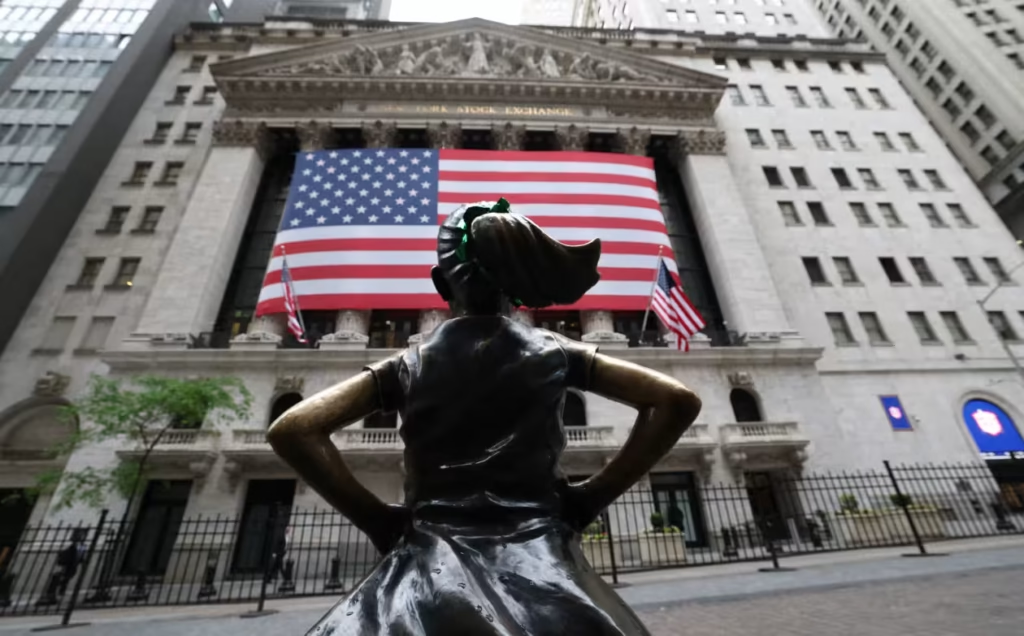The sculpture “Fearless Girl” at the New York Stock Exchange.
As investors continue to ignore last week’s little decline from record highs, futures indicate that equities are off to a strong start in the penultimate session of the quarter.
Notwithstanding a number of possible market catalysts over the coming days, most notably news about the U.S. jobs sector, the Cboe Volatility index VIX is below 16, indicating that traders are optimistic.
However, if another market obstacle—a complete shutdown of the U.S. government—occurs in the middle of the week, it’s likely that the official nonfarm payrolls number won’t be released on Friday.
However, Seth Basham, an analyst at Wedbush, claims that the market is now “fearless,” with tight credit spreads and minimal volatility indicating that investors are not worried about a significant economic slump.
According to a report released on Sunday, “investor sentiment remains constructive, with valuations supported by optimism around AI monetization and expectations of an easing cycle,” Basham writes.
A thriving property market is one of the other economic tailwinds. According to Basham, a recent spike in refinance activity and a 20% increase in August new house sales were caused by reduced mortgage rates.
Additionally, he believes that the One Big Beautiful Bill tax cuts will increase the breadth of consumer spending. “Recent tax relief measures could accelerate refund levels by at least 5% in 2026 and 15%, providing meaningful support to lower-income households and a potential boost to the economy starting in February,” Bashan claims.
According to Basham, there are other industry areas, such as healthcare, consumer staples, real estate, and materials, whose values are not as high as they have historically been.
Regarding apprehension regarding the parallels between the current market and the dot-com bubble, he stated that there are “yellow signposts in [the] AI frenzy, but no red stop signs.”
For instance, less than 50% of initial public offerings (IPOs) were unprofitable in the second quarter of this year, compared to almost 75% of companies entering the market in 1999, which was a surefire indication of excitement. Basham adds that megadeals like the $350 billion AOL-Time Warner combination have not yet materialized and may cause value destruction.
According to him, “The Fed’s pivot has amplified speculative risk-taking as market psychology leans on liquidity expectations rather than fundamentals, thereby raising near-term risk.”
And he highlights two specific examples of this that could be problematic. The first is the recent spike in companies with high short interest ratios, which is a trade that many retail investors really like.
“The surge in high short-interest stocks is classic fuel to the fire of animal spirits — powerful but unsustainable,” adds Basham. “While the setup echoes 2020 and could extend near term, history shows these accelerations often end with sharp reversals.”
Basham claims that a speculative increase in high momentum equities suggests a possible intermediate peak, illustrating a similar dynamic.
“Retail-driven wagers have contributed to the exceptional strength of momentum stocks. We observe that some of the wind has been removed from this increase in recent days, but speculative bets have increased since the Fed started to lower interest rates,” he says.





